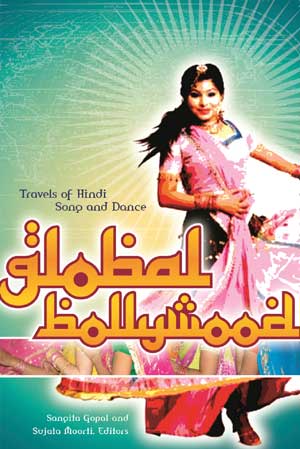 Sangita Gopal has transformed the guilty pleasure of her childhood into an exploration of a global phenomenon.
Sangita Gopal has transformed the guilty pleasure of her childhood into an exploration of a global phenomenon.
 English, as an academic discipline, has long ceased to be the study of the traditional Western canon. At the UO, English majors today have a chance to focus on everything from world literatures to visual culture.
English, as an academic discipline, has long ceased to be the study of the traditional Western canon. At the UO, English majors today have a chance to focus on everything from world literatures to visual culture.
“What is written or spoken in English, counts as English,” said Sangita Gopal, an assistant professor of the discipline.
Gopal, who was born in India, bursts with energy and enthusiasm for international and cultural studies. She teaches courses in international Anglophone (English-speaking) literature, touching on topics ranging from globalization to labor to human rights. She also teaches film courses, with a specialty in South Asia; her favorite topic is Bollywood.
Gopal’s interest in Bollywood began when she came to the U.S. to study medieval literature—a subject she soon abandoned after taking a few film classes and realizing that the cinema from her home country, despite its international popularity, was little investigated. She also began to recognize the unique status of the Indian film industry in the world at large. This, then, became her focus.
After the end of World War I, “everyone became Hollywoodized,” said Gopal. That is, American-made films became what everyone around the world watched—except in India.
“Ninety-five percent of the Indian film market was—and is—local product,” said Gopal. “This really struck me as significant. No other nation except Iran even comes close. So I thought, let us investigate why the Indian film industry has been so successful.”
Gopal’s interest is contrary to her middle-class Indian upbringing. “There, watching Bollywood films was considered low class,” she explained. “For me it had always been this really guilty pleasure,” she recalled with a laugh, describing how she used to sneak to the movies with her aunt. “If my parents had known I was watching, they would have been upset.”
Gopal asserts the durable popularity of Indian cinema for Indians owes everything to the genre’s unrealistic story lines coupled with over-the-top singing and dancing. These were the very elements the U.S. film industry, and her parents, shook their heads at.
“The Bollywood viewer wants one big story that includes all the elements: the love, the singing, the dancing, the drama,” she said. “It’s precisely that aspect of Bollywood that leads to embarrassment for middle-class viewers and also makes it work as popular film in India—and in many other countries,” she explained.
Gopal has built Bollywood films and concepts into her classes but hasn’t yet devoted an entire course to the subject. It’s something she sees in her future, however, given the inclusive direction of the English department. “Not only has the UO been a pioneer in seeking to analyze film in an academic setting,” she said. “But there’s a commitment to expanding our definition of what ‘studying English’ means.”
— Patricia Hickson
Sangita Gopal is coeditor of Global Bollywood: Travels of Hindi Song and Dance (Minnesota, 2008) and of Conjugations: Family and Form in New Bollywood Cinema (Chicago, 2011).




 A new course will provide UO students with mobile smart phones and a mission: to build smart-phone apps.
A new course will provide UO students with mobile smart phones and a mission: to build smart-phone apps.
 Two CAS faculty members have been honored with the 2011 UO MLK Award.
Two CAS faculty members have been honored with the 2011 UO MLK Award. Petrarch is not only going digital at the UO, but musical as well.
Petrarch is not only going digital at the UO, but musical as well.